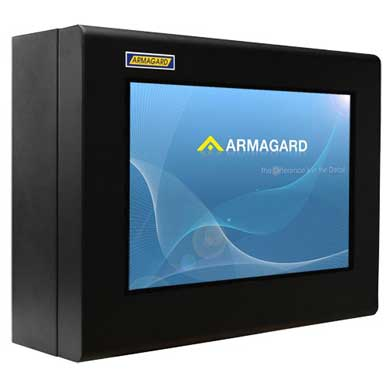LCD Enclosure Waterproofing
Posted by: Richard Williams | Posted on: | 0 Comments
There are several reasons why you would want a waterproof LCD enclosure. For advertisers, outdoor digital signage provides an effective way of reaching large audiences, for relatively low cost in comparison to other advertising mediums such as newspapers or televisions. For service providers, outdoor screens in an LCD enclosure provide an effective form of communication, enabling you to keep service users informed of the latest development, changes and important news. While public buildings such as schools and colleges can also use outdoor screens to provide a method of communicating with staff, visitors and students, enabling immediacy and efficiency.
 And industries that require an effective form of internal communication on factory floors or warehoused may also require a waterproofed screen, especially in locations where industrial processes or daily wash down mean that any screen is in danger of getting wet.
And industries that require an effective form of internal communication on factory floors or warehoused may also require a waterproofed screen, especially in locations where industrial processes or daily wash down mean that any screen is in danger of getting wet.
Waterproofing a standard LCD or plasma screen does pose several challenges, as these devices, no matter where they are used, also require cooling to prevent overheating.
For this reason, any waterproofing system needs also to allow expulsion of the heat generated by the screen and allow fresh, cooler air to gain access to the screen to help transfer this heat away.
Most LCD or plasma screens that operate indoors do this by means of venting systems, where slots in the casing allows hot air to get out and cooler air to gain access. Obviously, for a screen that needs to operate in wet or all-weather locations, this means that water could gain access to the device, leading to failure.
For this reason, a waterproof LCD enclosure needs a clever system of allowing cool air in and hot air out. This is often done with clever use of baffled chambers and ventilation systems, which suck air up and prevent moisture from gaining access to the screen.
IP65 and NEMA 4
A clear indication of how well a screen protects against water ingress are the international and national guidelines IP65 and NEMA 4. IP65 (Ingress Protection) is a European rating system that denotes the capability of an enclosure to keep both moisture and particulates such as dust from the screen. Basically, the higher the numbers the more protection is offered. For most applications where screens are in danger of getting wet, IP65 provides adequate protection.
NEMA 4 (National Electrical Manufacturers Association) is a similar system in operation in the United States. Here also, the NEMA code denotes how effective the enclosure is against keeping particles and water away from the screen. Again, the higher the number the ore protection is normally offered, but for most applications NEMA 4 offers enough protection.
When looking for an waterproof LCD screen, whether a standard screen to be housed in an LCD enclosure or a specific waterproof model, look for these ratings to ensure the device has been built to provide adequate protection against water ingress.
Post shortlink:
Popular Products
LCD Enclosure
Need armor for your LCD/LED screen(s)? Outdoors or inside the versatile LCD enclosure protects against thieves, vandals & the weather. Installation idea: NFL stadiums.
Outdoor Digital Signage
Exclusive 46” outdoor screen protection. Dubbed the ‘Totem’, due to its distinct design, it repels damage threats, but attracts audiences. Installation idea: Drive-thru restaurants.
Portrait Flat Panel Enclosure
Safeguard your eye-level advertising display screen(s), indoors or outdoors. Completely customizable, add exciting features like touch screen technology. Installation idea: Restaurant frontages.
Indoor Digital Signage
Popular purchase for retail outlets! Great for ‘point of sale’ persuasion, boost your brand with static & motion advertising from a single unit! Installation idea: Mall of America.




